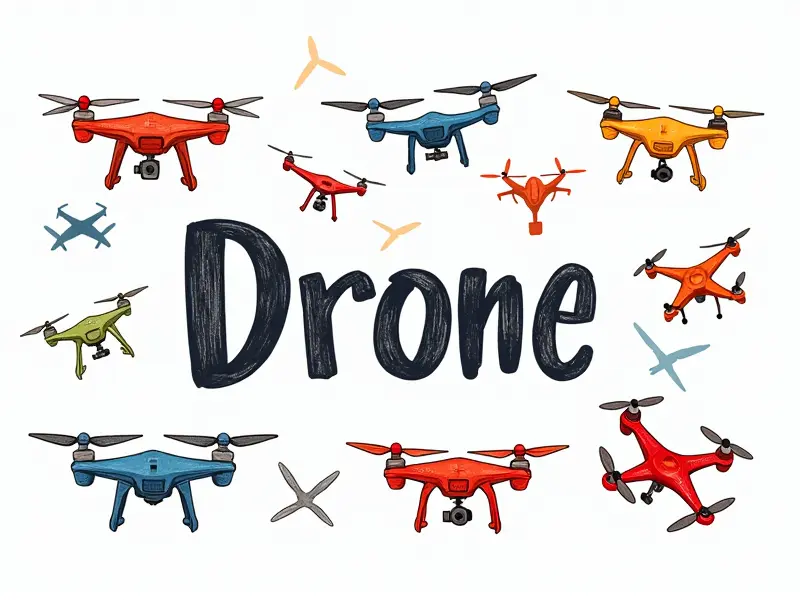What propeller size fits?

Choosing the Right Prop Size for Your Drone
The propeller size plays a crucial role in determining the performance of your drone, whether it's an FPV racing drone or an RC quadcopter. A properly sized propeller ensures optimal flight characteristics such as stability, speed, and efficiency. This article will guide you through selecting the right propeller sizes for different types of RC aircraft.
Best Propellers for FPV Racing Drones
FPV racing drones require high-performance propellers that can handle rapid acceleration and sharp turns. For these applications, it's essential to choose props that provide excellent thrust while maintaining maneuverability. Commonly used propeller sizes range from 5030mm (5x3) to 6045mm (6x4.5).
- Size: Opt for smaller propellers like 5030 or 5040 if you need high speeds and quick responsiveness.
- Motor Compatibility: Ensure the propeller is compatible with your motor's KV (Kilovolt) rating to achieve balanced performance.
Optimal Propeller Sizes for RC Quadcopters
RC quadcopters are versatile and can be used for various applications, from aerial photography to racing. The propeller size significantly influences the drone's stability, lift capacity, and battery efficiency.
- Size: For general use, 5045mm (5x4.5) or 6045mm (6x4.5) props are ideal for achieving a balance between speed and stability.
- Battery Efficiency: Larger propellers like 7045mm (7x4.5) offer better lift capacity but may consume more power, making them suitable for heavy payloads or high-altitude flights.
Essential Propeller Sizes for RC Planes
RC planes have different aerodynamic requirements compared to multirotor drones. The propeller size must match the plane's design and intended use, whether it’s a trainer, scale model, or high-performance aircraft.
- Size: For trainers and smaller models, 10x6 (10 inches diameter by 6 pitch) is suitable. Larger planes may require props like 14x7 or 16x8 for optimal performance.
- Motor Fit: Ensure the propeller fits snugly on your motor without causing excessive wear or imbalance.
Propeller Guide for RC Helicopters
RC helicopters rely heavily on precise control and thrust efficiency. The right propeller size ensures stable hover, agile maneuvers, and efficient power consumption.
- Size: For collective pitch helis, 10x4.7 or 12x5 is commonly used for small to medium-sized models.
- Battery Efficiency: Larger props like 13x6 may be preferred for heavy-lift applications but should be balanced with the motor's power output.
Selecting Props for Maximum Efficiency
To maximize efficiency, consider factors such as propeller pitch, blade material, and aerodynamic design. Carbon fiber blades are lighter and more durable than plastic ones, providing better performance at high speeds.
- Pitch: Lower pitches (e.g., 4.5) offer higher thrust for quick takeoffs, while higher pitches (e.g., 6.0) provide sustained speed and efficiency.
- Aerodynamics: Propellers with smooth edges and optimized airfoil profiles reduce drag and increase lift.
Prop Size Impact on Drone Performance
The propeller size directly affects drone performance in several ways. Larger props provide more thrust but may consume more power, while smaller props offer higher speeds at the cost of reduced lift capacity.
- Speed: Smaller props are generally faster due to lower rotational resistance.
- Battery Consumption: Larger props tend to drain batteries quicker but can handle heavier payloads and longer flights.
Quick Guide to Matching Propellers
Making the right propeller choice involves matching your drone's motor specifications, intended use case, and performance requirements. Here’s a quick guide:
- Determine Motor Specifications: Know the KV rating of your motor.
- Select Appropriate Size: Choose a propeller size that matches your drone's weight and desired flight characteristics.
- Battery Compatibility: Ensure the chosen propeller will work within the power limits of your battery system.
Finding Perfect Fit: Prop Sizing Tips
To find the perfect fit for your drone, follow these tips:
- Trial and Error: Test different prop sizes to observe how they affect flight characteristics like speed, stability, and battery life.
- Consult Manufacturer Recommendations: Refer to manufacturer guidelines or forums for recommended propeller sizes based on your specific model.
- Balancing Act: Strive for a balance between thrust efficiency and power consumption to optimize overall performance.
Prop Size Compatibility for RC Aircraft
Selecting compatible props ensures optimal performance across various types of RC aircraft. Always check the manufacturer's guidelines or consult with experienced hobbyists in forums.
- Motor Fit: Ensure the propeller shaft fits snugly on your motor without causing excessive wear or imbalance.
- Aerodynamic Design: Choose props that match the aerodynamic design of your aircraft for best performance.
How to Match Props with Your Drone Motor
To select the right propeller for your motor, consider these steps:
- Determine KV Rating: Know the KV rating of your motor (higher KV motors require lower pitch props).
- Calculate RPM: Use a prop calculator to determine the optimal RPM range based on your motor's specifications.
- Battery Voltage: Ensure the chosen propeller operates within the voltage limits of your battery system.
Conclusion
Selecting the right propeller size is crucial for achieving optimal performance in your RC aircraft. By considering factors such as motor compatibility, flight characteristics, and aerodynamic design, you can ensure that your drone performs at its best whether it's an FPV racing drone, quadcopter, plane, or helicopter.

